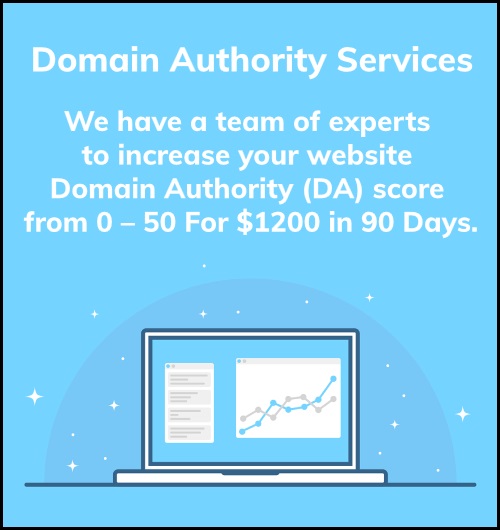As a marketer, CRO- Conversion optimization is the efficient thing that you can do for your business. One of the essential purposes of building a website is to gain web traffic. This makes it essential for marketers to understand everything about conversion optimization.
As a marketer, you have to understand research, A/B tests, data-driven hypotheses, and analytical capabilities.
In this particular aspect, you cannot make decisions based on your gut. Instead, with the help of CRO, your team can acquire better ideas that can bring increased web traffic and eventually into sales. The A/B tests can bring light to optimal experiences.
According to brainvire.com, conversion optimization is often misinterpreted as per the marketing disciplines. It’s more than proving that you are right or testing button colors.
To understand conversion optimization properly, we have discussed a few tips here-
Table of Contents
1. Develop the skill to run A/B tests
One of the fundamental tasks in the process of conversion optimization is to run A/B tests. These are online controlled experiment tests. You can test two or more combinations of a particular page and evaluate its performance. The simplified testing software process has made the evaluation process more comfortable.
Regardless of this, you ought to use a statistical inference methodology to make your decision. This helps you to pick the best combination suitable for your audience. Remember that there are varied differences that can pull down web traffic.
2. Mentioned here are a few common testing errors you are prone to make
Run experiments for a specific tenure- Prepare a weekly cycle to run tests. Usually, the tests are run for 3-4 weeks before a final decision is made.
Determine your sample size- Pick your sample size before you start with the tests. You can use online size calculators for the same and then choose a particular sample size.
Proper data tracking- It is significant for you to implement data tracking correctly so that you acquire relevant data post your experiment.
Determine evaluation criteria- write down your hypothesis before you start the experiment process. This will help you to draw a relevant conclusion at the end of the experiment. Also, cite follow-up measures in case the experiment fails, or you acquire the required results.
Make sure that you set your test parameters right at the start. This saves you from poor and inaccurate results.
3. How to analyze these tests?
It would help if you had specific parameters to analyze your tests. For example, if you acquire statistics above 75%, then it is a positive response to the test. However, there are a lot of considerations that you need to develop before you set out for conversion optimization.
You can analyze your data by confirming whether your sample ratio is accurate or not. You can export the data into a spreadsheet to determine the overall impact success of the metrics. The granular indicators are quite helpful in this process.
4. Design customized experiments
There are a variety of experiment designs available. It is essential to choose one design that offers you relevant results based on your data. Bandit test, A/B test, Multivariate analysis are some standard tests used by marketers.
Each test is used for a specific type of data and derives an attractive solution. Therefore, carry out in-depth research about which design is suitable for your experiment.
5. Pick your overall evaluation criteria
If you don’t have some specific criteria to evaluate, then the experiment will be fruitless. For instance, you want to determine the right age group for your website. You ought to mention the hypothesis based on this criterion and accordingly use a specific design for the experiment.
You may also have to consider the demographic and psychographic profile of your audience. This way, you will acquire a specific set of the target audience in your results.
Set your criterion right at the start to avoid an accumulation of irrelevant data.
6. Landing page can be a helping hand
Landing pages help you to evaluate conversion rates. They help you to measure the customer journey. You can also reduce confounding variables and run controlled experiments. You can acquire fruitful results by reaching the right audience by running changes across templates.
Landing pages are more comfortable to design and test. And, you compare results to boost conversion rate.
7. Build a useful model for conversion
Setting up a model helps you to step back and vary different measures that can bring you, customers. You can compare different models and choose a useful model that boosts conversion.
For instance, a quick call to action can increase conversions. You can highlight the call to action on your page and boost website conversions. You can test analyses to determine whether the same is adequate for your business or not and make alterations on your landing page.
8. Encourages innovation and reduces friction
Most of the conversion optimization is classified into two sections- cut conflict and increased motivation. There is a scope of dispute when visitors get distracted. This distraction can be either they are unable to find something on the website or are assigned a tricky task.
The most effective way to cope with this hurdle is to highlight each product on your website. This will reduce friction and increase conversion. Increased session time, quick website, and filter options are yet another measures to eliminate chafing.
9. Conclusion
This is an endless journey, and hence all tips cannot be mentioned here. However, with time and experience, you are naturally bound to learn a lot about conversion optimization.
Tech Trends
Related posts
Leave a Reply Cancel reply
Hot Topics
Categories
- Ads (5)
- Animes (25)
- Artificial Intelligence (AI) (35)
- Augmented Reality (AR) (10)
- Automotive (9)
- Bitcoin (16)
- Blockchain (24)
- Business (244)
- Business Intelligence (3)
- Cloud Computing (23)
- Computer (128)
- Concrete Technology (1)
- Cryptocurrency (10)
- Cybersecurity (42)
- Data Science (9)
- Database (4)
- DevOps (6)
- Digital Marketing (76)
- Digital Workplace (14)
- Ecommerce (1)
- Education (28)
- Electric Vehicle (EV) (1)
- Electronics & Hardware (17)
- Entertainment (42)
- Fabrication (3)
- FAQ's (1)
- Finance & Marketing (47)
- Gadgets (35)
- Games (8)
- Gear (29)
- HTTPS (1)
- Industry (46)
- Information Technology (90)
- Internet (413)
- Internet of Things (IoT) (41)
- Job (25)
- Machine Learning (6)
- Marketing (92)
- Mobile Apps (21)
- Movies (11)
- Natural Language Processing (6)
- News & Trends (109)
- Programming (4)
- Science & Technology (235)
- Security (81)
- SEO (56)
- Services (36)
- Social Media (73)
- Software (99)
- Sports (1)
- Technology (306)
- Telecom (6)
- TikTok (5)
- Tours & Travels (9)
- Uncategorized (11)
- Virtual Reality (VR) (7)
- VoIP (4)
- Web Technology (42)
- Workforce (17)
- Workspace (6)



Stay connected